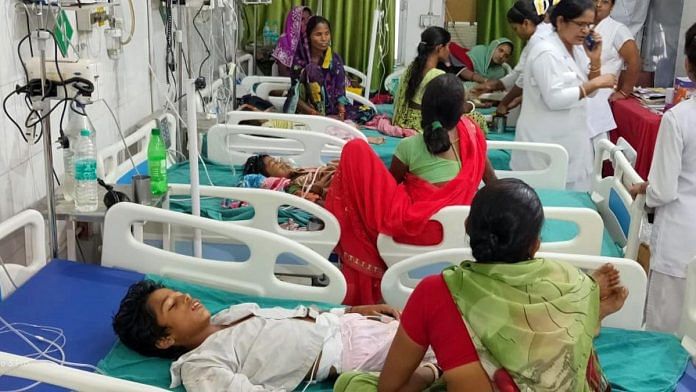New Delhi: Delhi has reported its first case of Japanese Encephalitis (JE) after a gap of 13 years, according to a notice issued by the Municipal Corporation of Delhi (MCD) Wednesday.
“A case of Japanese Encephalitis has been reported from the Bindapur area under the West Zone recently. The Case Fatality Rate (CFR) of this disease is high, and those who survive may suffer from various degrees of neurological sequelae,” read the order.
JE is a zoonotic viral infection caused by the JE virus. Essentially, it means that it is caused by a virus that can be transmitted from animals to humans. In this case, via mosquitoes.
The MCD has implemented containment measures, directing all district health officers (DHOs) and epidemiologists to ramp up vector control efforts. These include larval source reduction and the launch of community-based initiatives, such as awareness campaigns, to prevent and control JE’s spread.
ThePrint has accessed a copy of the order which, however, does not mention any details about the affected patient.
The vector-borne disease had claimed 10 lives in Assam in July this year, all of whom were undergoing treatment at Gauhati Medical College and Hospital (GMCH).
The virus is transmitted from animals, birds, pigs, particularly the birds belonging to family Ardeidae (eg cattle egrets, pond herons etc.) to humans by the Vishnui group of Culex mosquitoes. It may result in febrile illness of variable severity and affect the central nervous system, causing severe complications, seizures and even death.
According to Dr Kali Charan Das, a neurologist at All India Institute of Medical Sciences (AIIMS), Raebareli, Uttar Pradesh, JE primarily affects children, often with severe consequences.
“While adults may contract the virus, it is usually mild or asymptomatic in their case. However, in children, particularly those under 5 years of age, the infection can have devastating effects. The virus can spread to the brain, leading to seizures, confusion, and encephalopathy—a condition where the patient becomes unresponsive,” he explained.
The World Health Organization (WHO) notes that common symptoms of JE include headache, fever, mental confusion, and delirium. In severe cases, the disease can progress to acute encephalitis syndrome (AES), characterised by convulsions, altered consciousness, and behavioural changes.
India accounts for a significant proportion of JE cases in Asia, according to the National Center for Vector Borne Diseases Control (NCVBDC). While the number of reported cases varies annually, thousands are documented each year in India. However, these figures likely underestimate the true burden of the disease due to gaps in reporting and diagnosis.
In response to the burden of JE, India has implemented vaccination programmes in endemic areas, which has been expanded in recent years, targeting children in such regions. Adult vaccination has been started in three states where the disease is highly prevalent—Assam, West Bengal and Uttar Pradesh.
Dr Das explained the transmission dynamics of JE, highlighting the role of mosquitoes and pigs.
“The issue with this virus arises in areas with significant garbage and a high presence of pigs and other animals. Mosquitoes often serve as carriers between pigs and humans. If you live nearby, you’re at risk of being bitten, which can lead to an initial presentation of general fever-like symptoms,” he noted.
Delhi is not an endemic region for JE and last reported 14 cases of the disease in 2011.
Vaccination drives against the disease were conducted in several states, including Maharashtra and Telangana, earlier this year.
According to Government of India guidelines, two doses of the JE vaccine are included in the Universal Immunisation Programme (UIP) for kids. The first dose is administered at 9 months of age alongside the measles vaccine, and the second dose is given with the DPT booster between 16 and 24 months. JENVAC, developed by Bharat Biotech, is the most commonly used vaccine for this purpose.
(Edited by Zinnia Ray Chaudhuri)






